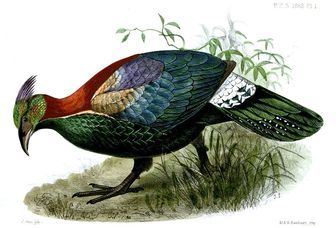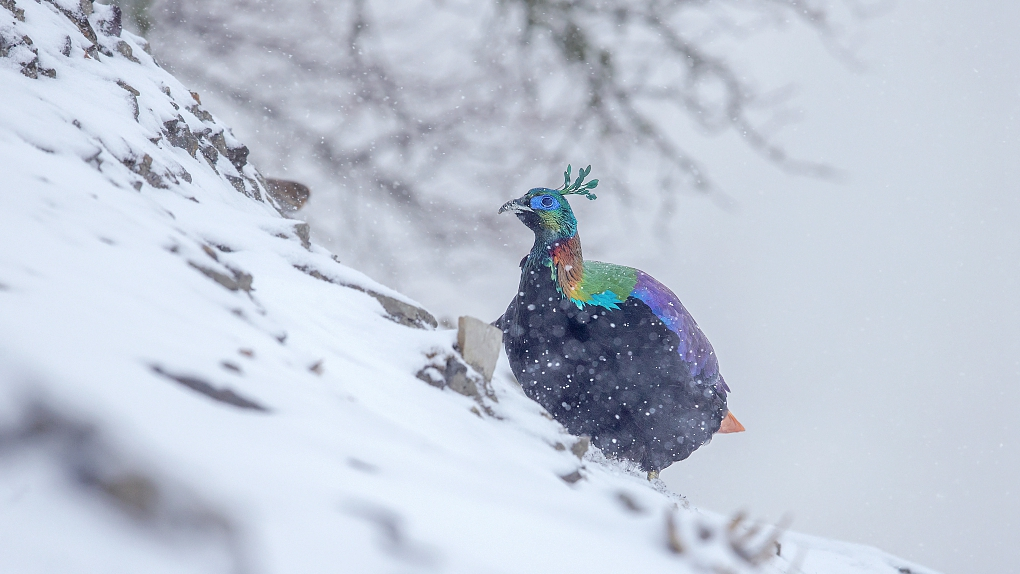


This species is endemic to southwest China, and is found primarily in southeast Gansu, southeast Qinghai, western Sichuan, and northwest Yunnan ( Lei & Lu, 2006 Lu, 2015). The Chinese monal ( Lophophorus lhuysii) is the largest Galliform species (with a mean length of 76 cm and a mean weight of 3.18 kg) distributed in high-montane regions, mainly inhabiting subalpine scrubs, as well as subalpine and alpine meadows at an elevation of 3,000–4,900 m ( MacKinnon, Phillipps & He, 2000 Madge, McGowan & Kirwan, 2002). It offers great potential for addressing endangered and poorly known bird species with scarce occurrence data (e.g., Botero-Delgadillo, Páez & Bayly, 2012 Marcondes et al., 2014 Tobón-Sampedro & Rojas-Soto, 2015). In particular, Ma圎nt, a presence-only modeling approach based on the maximum entropy principle ( Phillips, Anderson & Schapire, 2006), outperforms other models in prediction accuracy ( Elith et al., 2006 Phillips, Anderson & Schapire, 2006), transferability ( Tuanmu et al., 2011), and performance with small sample sizes ( Pearson et al., 2007 Costa et al., 2010). Ecological niche models have developed as excellent tools for predicting habitat distribution of species that are difficult to investigate ( Peterson, Ball & Cohoon, 2002 Mota-Vargas et al., 2013), because they can predict the distribution of species’ habitats at a large spatial scale based on species presence data and environmental variables, without the need for extensive surveys and detailed descriptions of physiological and behavioral characteristics ( Morrison, Marcot & Mannan, 2012). Understanding the distribution of suitable habitats and its influencing factors are crucial for wildlife conservation and management ( Austin, 2002).

Based on these results, we provide four suggestions for the conservation management of the Chinese monal: (1) ad hoc surveys targeting potential suitable habitats to determine species occurrence, (2) more ecological studies regarding its dispersal capacity, (3) establishment of more corridors and green bridges across roads for facilitating species movement or dispersal, and (4) minimization of local disturbances. 54.78% of the suitable habitats were under the protection of existing nature reserves and two conservation gaps were found.

The predicted suitable habitats of the Chinese monal covered an area of 2,490 km 2, approximately 9.48% of the Qionglai Mountains, and was highly fragmented. Suitable habitats of the Chinese monal were associated with about 31 mm precipitation of the driest quarter, about 15 ☌ of maximum temperature of the warmest month, and far from the nearest human residential locations (>5,000 m). Using ecological niche modeling, we predicted current potential suitable habitats for the Chinese monal in the Qionglai Mountains with 64 presence points collected between 20. Knowledge is limited regarding the natural habitats of the Chinese monal ( Lophophorus lhuysii), which is a vulnerable Galliform species endemic to the high-montane areas of southwest China and a good candidate for being an umbrella species in the Qionglai Mountains. Understanding the distribution and the extent of suitable habitats is crucial for wildlife conservation and management. Predicting suitable habitat of the Chinese monal ( Lophophorus lhuysii) using ecological niche modeling in the Qionglai Mountains, China. For attribution, the original author(s), title, publication source (PeerJ) and either DOI or URL of the article must be cited. Licence This is an open access article distributed under the terms of the Creative Commons Attribution License, which permits unrestricted use, distribution, reproduction and adaptation in any medium and for any purpose provided that it is properly attributed. 3 Pingdingshan University, School of Resources and Environmental Sciences, Pingdingshan, China DOI 10.7717/peerj.3477 Published Accepted Received Academic Editor Patricia Gandini Subject Areas Biodiversity, Conservation Biology, Natural Resource Management Keywords Conservation gap, Habitat fragmentation, Local disturbances, Nature reserve, Ma圎nt Copyright © 2017 Wang et al.


 0 kommentar(er)
0 kommentar(er)
